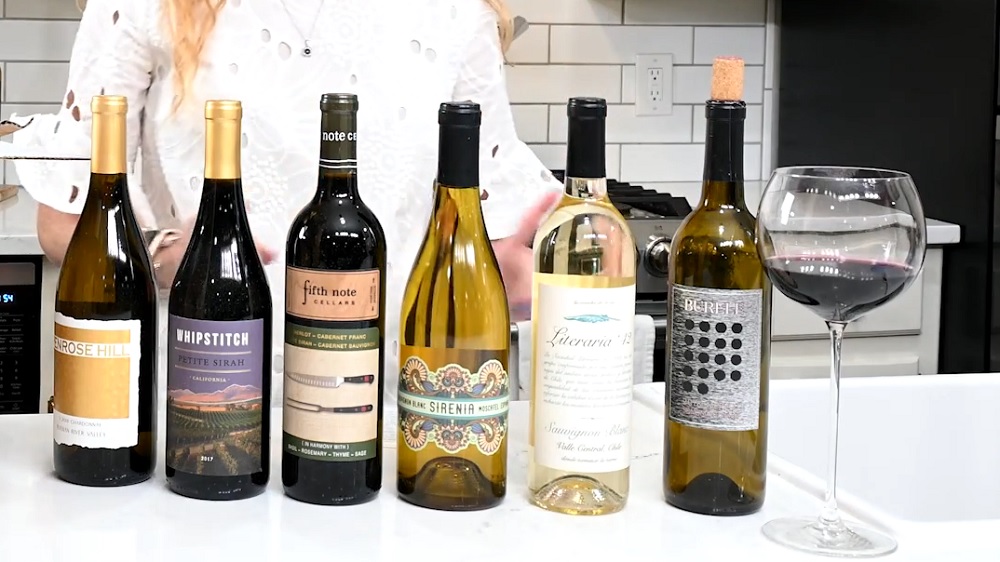There was a time when wine was seen as a bastion of the wealthy and an indulgence that only the rich could afford to enjoy. That time has long since passed, and wine has now become a true drink of the people, a pleasure that everyone can enjoy and savor at the end of a long hard day.

But the idea is that in order to fully appreciate wine, you need to understand its history and the complexity of flavors that every mouthful, glass, and bottle contains and that you need to be intimately familiar with the concept of terroir, hasn’t been so easy to dispel.
The notion that wine is somehow a drink for those who are better versed in the minutia of the finer things in life is one that refuses to go gentle into that good night regardless of how much it’s had to drink.
Those dusty old fables that surround the juice of the grape are thankfully beginning to dissipate as more and more of us are becoming familiar with the intricate makeup of the endless varieties of whites, reds, and rose’s that populate both the international and national wine scenes.
And the deeper entrenched we become in the ever-expanding macrocosm of wine, the more we yearn to discover about this ancient drink.
That desire and that need to find out more about wine has led to an explosion in wine clubs, that were and are set up to cater to, and satisfy our hunger to try more, and find out more about wine.
The tsunami of clubs erupting onto the world stage has led to a problem that few of us ever foresaw or imagined that we’d be burdened by, namely which wine club should we join if we want to successfully continue our journey through the vines and wines that our palettes demand we try.
In order to answer that question, and make the decision about which club to invest our time and money in, we took out a number of different subscriptions and joined as many clubs as we could in an attempt to whittle down the list, and come up with a definitive wine club top ten.
At least that was our initial idea, but as time progressed ten soon became five, and then gradually, five become one, and we were left facing the inescapable conclusion that not all wine clubs are the same, and to use an Orwellian adage, that some wine clubs are more equal than others.
And the wine club that topped our most equal list was and still is, Firstleaf
Who And What Is Firstleaf?
Maybe we should start by backtracking a little bit and explaining what a wine club is, and who Firsteaf is.
Wine clubs are monthly or bi-monthly, depending on the package that you invest in, subscription services that send their customers a predetermined number of bottles of wine to sample, and enjoy.
Most of them offer the same level of service and provide a similar quality of wine, but the price for the product that they provide can, and often does vary wildly.
Firstleaf, based in the heart of California’s most prestigious and famous wineries, the Napa Valley, was established by Philip K. James a vintner and philanthropist who is also the CEO of Penrose Hill, a noted winery and vineyard.
When James wasn’t busy biking seventeen thousand miles around the world to raise awareness of, and funds for his charity, Wine Into Water which provides clean drinking water for villages in fifteen different countries, he found a way to share his passion for wine with people all over the country.
And the medium he chose to do that through? It was Firstleaf.
A custom-designed club that was set up to provide its subscribers with wines that cater to their individual palette, Firstleaf was established to fulfill a unique ideology.
James wanted to prove to his clientele that wine didn’t have to be exclusive, it could be inclusive and by adapting to its member’s needs and what they wanted, it could do what so many thought couldn’t be done.
It could bring everyone into the fold, and teach anyone who was interested in learning more, all about wine. And the best thing about Firstleaf?
You don’t have to learn about what you do and don’t like about wine in some stuffy classroom or packed lecture theater. You learn by drinking wine that has been exclusively chosen to appeal to your palette.
So How Does Firstleaf Work? What Makes It Special?
Where do we even begin to try and explain why Firstleaf is so different from the rank and file wine clubs that it leaves in its wake? The first thing about James’ purpose-designed club is its location.
As it’s in the Napa Valley, it’s perfectly situated to acquire the best wines that the West Coast has to offer without passing on the transportation costs that it would normally accrue in obtaining them to its customer base.
Secondly, it produces its own wines from its own vineyards that it then sends out to its subscribers, and we know what you’re thinking, and we’re going to stop you from traveling down that particular avenue.
Penrose Hill, the winery at the heart of Firstleaf isn’t a Two Buck Chuck style, mass production facility, it’s an award-winning vineyard that has over one thousand of the aforementioned awards to its name.
Lastly, the way the club works means that the longer you’re a member, the more it learns about you and what you do and don’t like in a wine, and that learning process starts the moment that you sign up for Firstleaf.
And it starts by choosing your first six bottles of wine for you. We know it sounds crazy, an online shop that chooses for you, but there is a method to the Firstleaf madness.
Before it allows you to enter your billing and checking information and details, the Firstleaf site asks you a series of questions about the sort of wine you prefer to drink and what you do and don’t enjoy, and based on your answers, it’ll select six individual wines from the vast stock that Firstleaf has, and as soon as you’ve filled in all of your details, it’ll send them out to you the same day.
The Continual Learning Process
The secret to Firstleaf’s success lies in the adaptive AI (okay, so it’s actually more akin to a hideously clever algorithm than an all-powerful wine-focused artificial intelligence, but as we’ve always preferred robots to programs, in our mind’s eye it looks like Robbie the Robot in a wine waiters uniform) that the site uses to constantly update your orders.
It relies on your input, and on you telling it what you did and didn’t like about the individual wines that you were sent as your first order.
By logging in, after you’ve finished each bottle and reviewing your order, the subscription service begins to slowly learn how to cater each order to your palette.
But it doesn’t end there, as the site also offers you the chance to change the bottles that it selects for you before it sends them to you. And if you do elect to alter the selection that it made, it learns more about you and your tastes, according to the choices that you’ve made.
Take a deep breath, because we’re not finished yet. The system also allows you to base your choice of wine on three distinct search parameters, which, forgive us and please indulge us, as we’re going to go into a little more detail about.
Country: Remember when we mentioned terroir earlier? The country or region where wine is produced is an all-important factor in establishing the depth of flavors that its grapes acquire from the soils that they’re grown in, and the first option you’ll be asked to consider is the region, which includes Italy, Australia, New Zealand, Chile, Argentina, France, Portugal, Spain, South Africa, and America
Grape Variety: It’ll then ask you to focus on the type of grape that you prefer, and will present you with the following options: Merlot, Malbec, Pinot Noir, Cabernet Sauvignon, Riesling, and Chardonnay.
Color: Finally it asks you to choose a color, according to your preferences, white, red or rose. And for some reason known only to itself and the scientist who developed it, it includes a sparkling option in the color choice.
Once you’ve made your choices, it presents you with a number of different wines that you swap with the wines that it chose for you, and depending on what you chose, the system continues to learn about what you do and don’t like.
Choosing The Wines
One of the questions that we found ourselves asking was how does Firstleaf actually choose the wine(s) that it adds to its cellars? And when we discovered how they did it, it was enough to convince us that we’d made the right choice.
Firstleaf has a dedicated team of Sommeliers who sample ten thousand different wines every year, and out of these ten thousand, it adds roughly two percent, or two hundred, of them to its inventory.
Why was this important to us? Because it helped to firmly establish the idea that the thing that mattered most to Firstleaf was quality, and that they weren’t, and aren’t content to add just any wine to their subscription service, it had to meet the strict requirements and guidelines established for, and by its wine club.
The Firstleaf Pros – The Things That We Like
Now that we’ve explained how the service works, we thought we’d dive a little more deeply into what we do, and don’t like about Firstleaf in order to give you a more comprehensive overview of our wine club of choice:
You Never Forget Your First Time – While we’re aware that first orders are always designed to hook you in and entice you to stay with a club, the fact that you’ll get almost forty percent off your first order with the club was enough to focus our interest – our first six bottles cost us around seventy-five dollars when they should have set us back nearly one hundred and thirty. And the shipping? That was free too. After that though, every month you’ll be billed for eighty dollars for six bottles of wine and ten dollars for shipping. Which is still a bargain, no matter which way you choose to look at it.
It’s Easy To Use – You just login and change your order as and when you want to, and as long as you review each box that you receive, they’ll alter your subscription so that it accommodates your palette. It’s a service that puts the needs and tastes of the customer before the profit margin of the company – don’t get us wrong, we know that they’re making money, we just like the fact that they’re making it the right way.
You Don’t Have To Settle For What You’re Given – The fact that you can alter and change each order to suit your tastes and your palette at any moment, we like that. That versatility proved to us that they believe wholeheartedly in putting their customers first.
Quality Not Quantity – The selection process that Firstleaf uses was another decisive factor, as it proved (again) that they believe in furnishing their customers with a quality product and aren’t interested in shipping mass quantity, cheaply made and produced wine to their subscribers.
Taking A Break – If you do decide that you want to take a wine break for a month or even two months, you can do that on their site. It’s easy, intuitive functionality allows you to pause your subscription as often as you want to, and won’t pursue you via email if you do decide to take time off.
What If I Get A Bottle Of Wine I Don’t Like? – If you do end up getting a bottle of wine that you don’t like, you can give Firstleaf’s customer service a call, or email them and tell them why you didn’t like it and they’ll credit your account with the amount in time for your next order. And if you need to send a shipment back for any reason, again give them a call and they’ll arrange to have it picked up at no additional cost to you.
Club Benefits – As soon as you become a member of their wine club, you’ll receive all sorts of different discounts from other wineries, so you can spread your wine net a little further afield and dip your toes into all sorts of other wines at a greatly reduced cost. And every subscription box is also supplied with a plethora of tasting notes and additional information, so you can learn more about the wine that you’re drinking, while you’re drinking it.
Cancellation – And if you decide that you want to cancel your membership, Firstleaf won’t make you jump through hoops the same way that a lot of other clubs do, and will. With a single click of your mouse, you can cancel your membership and never have to think about it again.
The Firstleaf Cons – The Things That We Don’t Like
We don’t subscribe to the Groucho Marx theory of club membership and we’re happy to join a club as long as it’s the right one for us, and as much as we love Firstleaf there are some things that we don’t like about it.
It’s A Quantity Thing – While we love the fact that you can login and change your order and swap out any bottle that they’ve chosen for you for another, what we don’t like is the fact that you can’t alter the number of bottles in your order. What if you only drink a bottle a week? That’ll leave you with two at the end of the month when your next shipment arrives, and then you’ll end up with eight bottles when you only want four. If they could alter the number of bottles in each order, the service would almost be perfect.
Stock – While they do carry a vast array of different wines, Firstleaf doesn’t stock everything and there are some wineries that don’t feature on their buddy list. So if you do go looking to add a bottle from your favorite winery to your order, you might just find that they don’t stock it. We guess it’s true, you really can’t have everything.
The Final Firstleaf Word
And that ladies and gentlemen is Firstleaf, who are, in our opinion, just about the best wine club in America. If you don’t believe us, try them for yourselves. We honestly think that you’ll be pleasantly surprised if you do.
- Shrimp Cocktail (and More) Wine Pairing Guide - 09/06/2022
- What Wine Serving Sizes Look Like: Standard Size and More - 08/06/2022
- How Much Sugar is in Wine: Glass and Bottle Sugar Content - 08/06/2022






